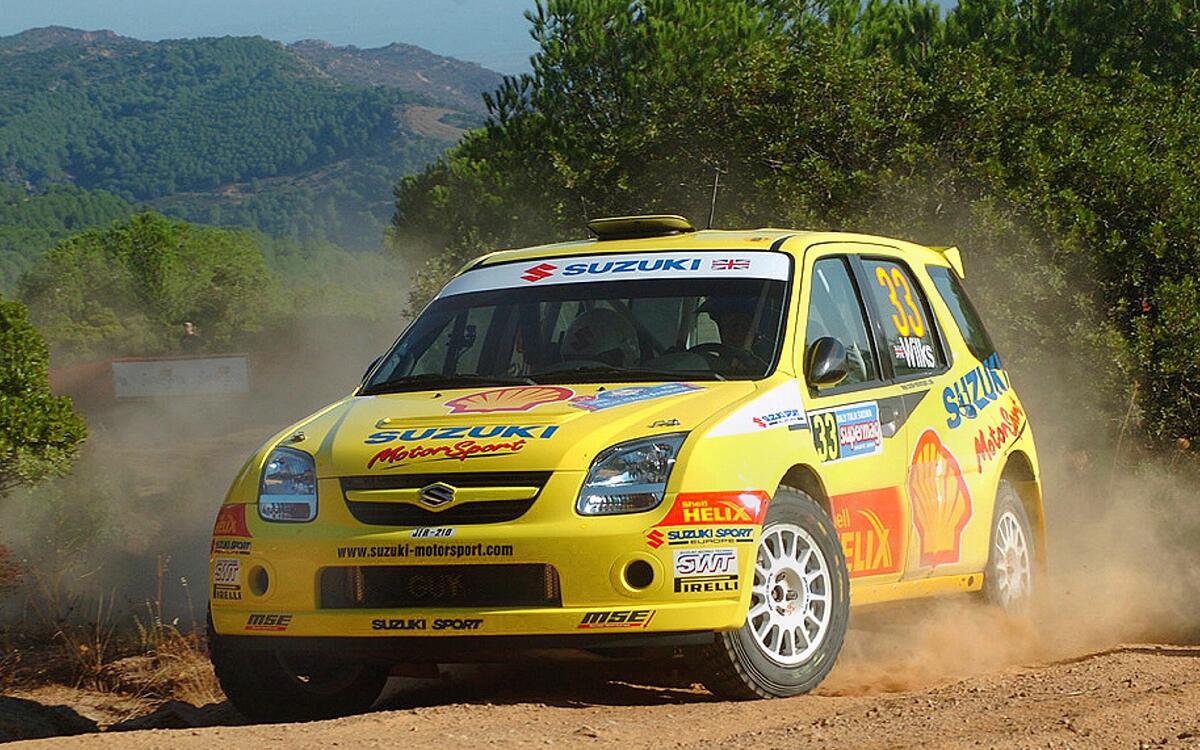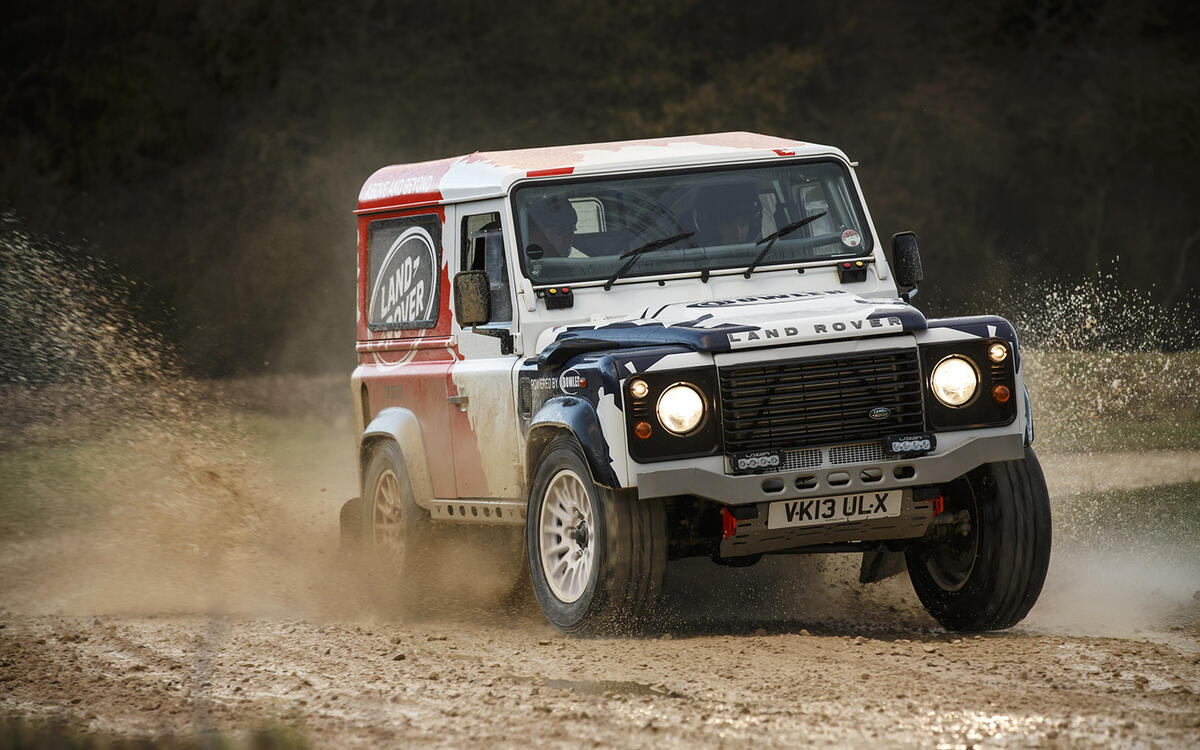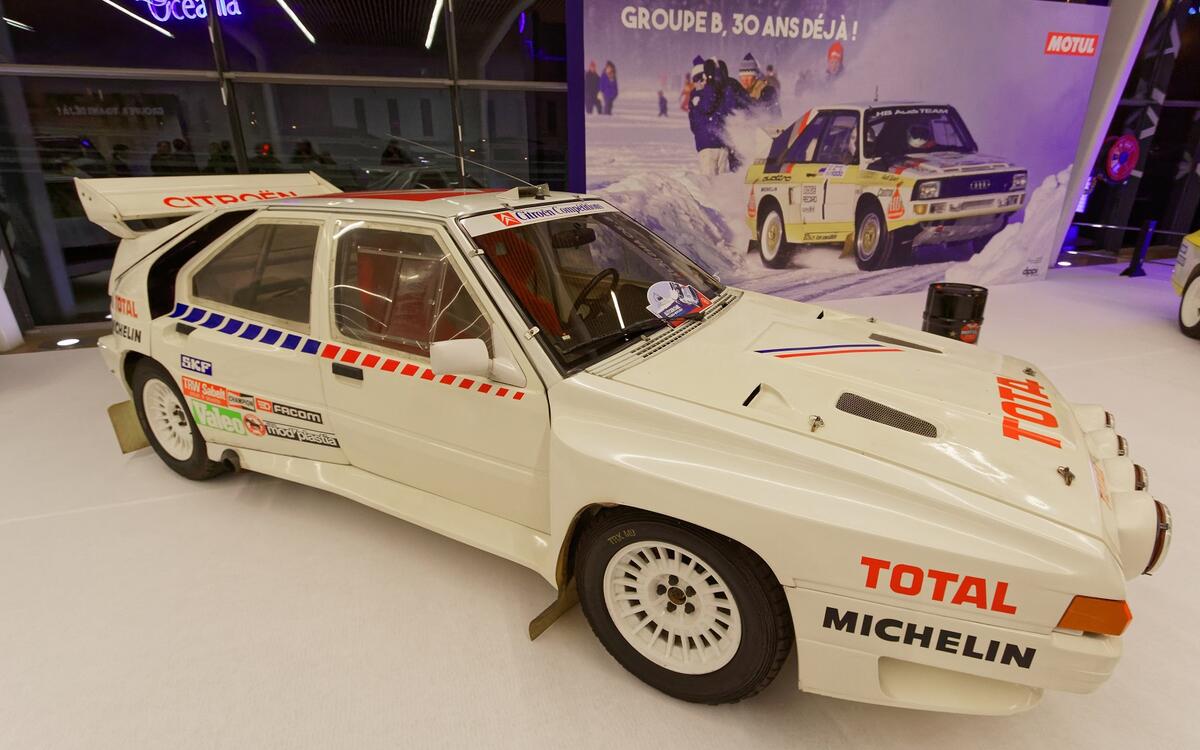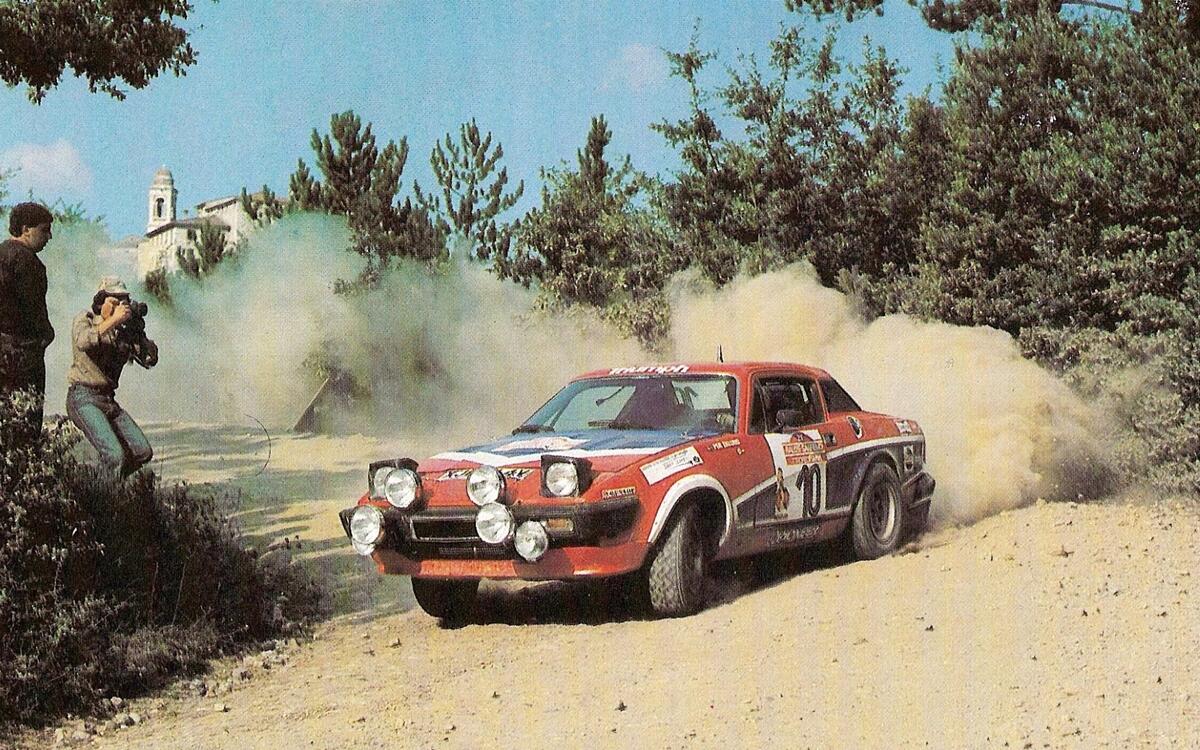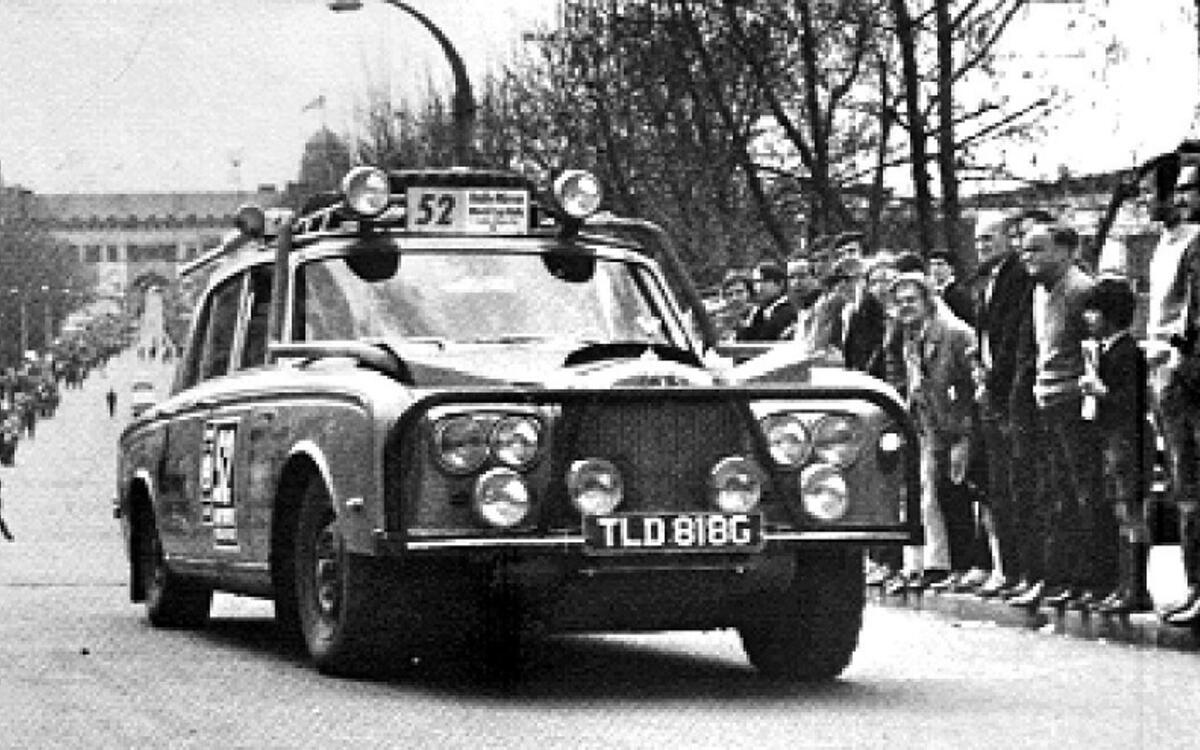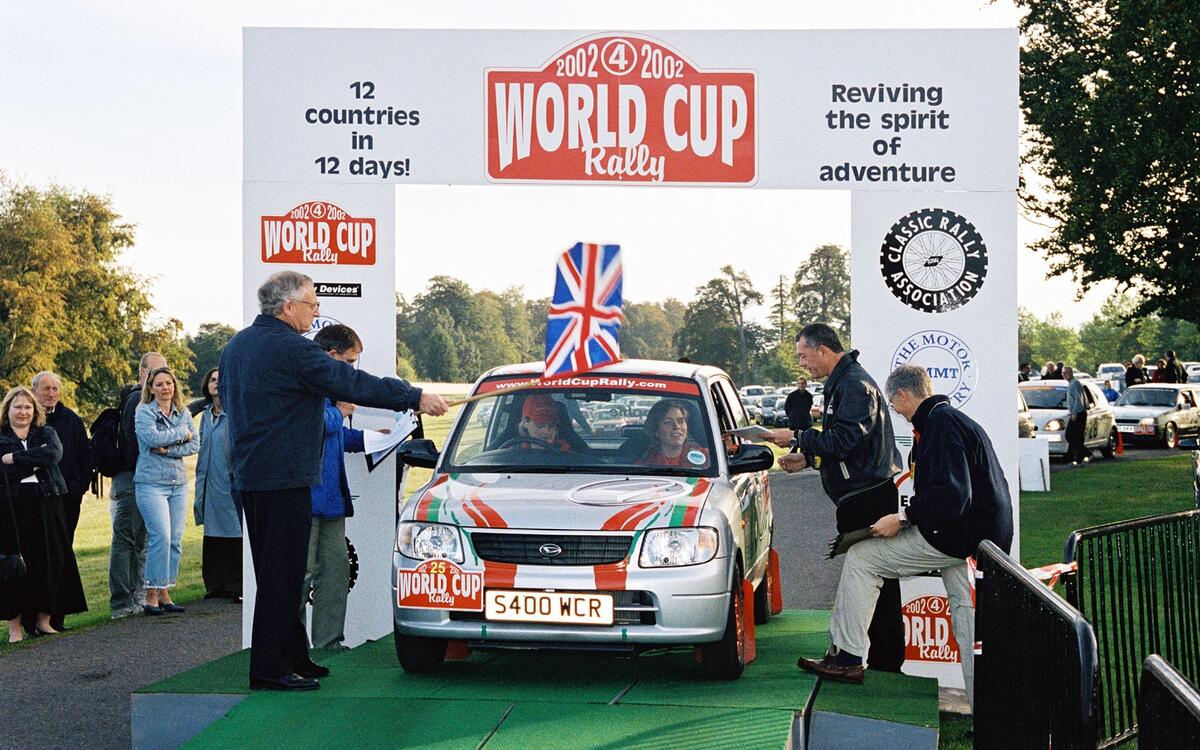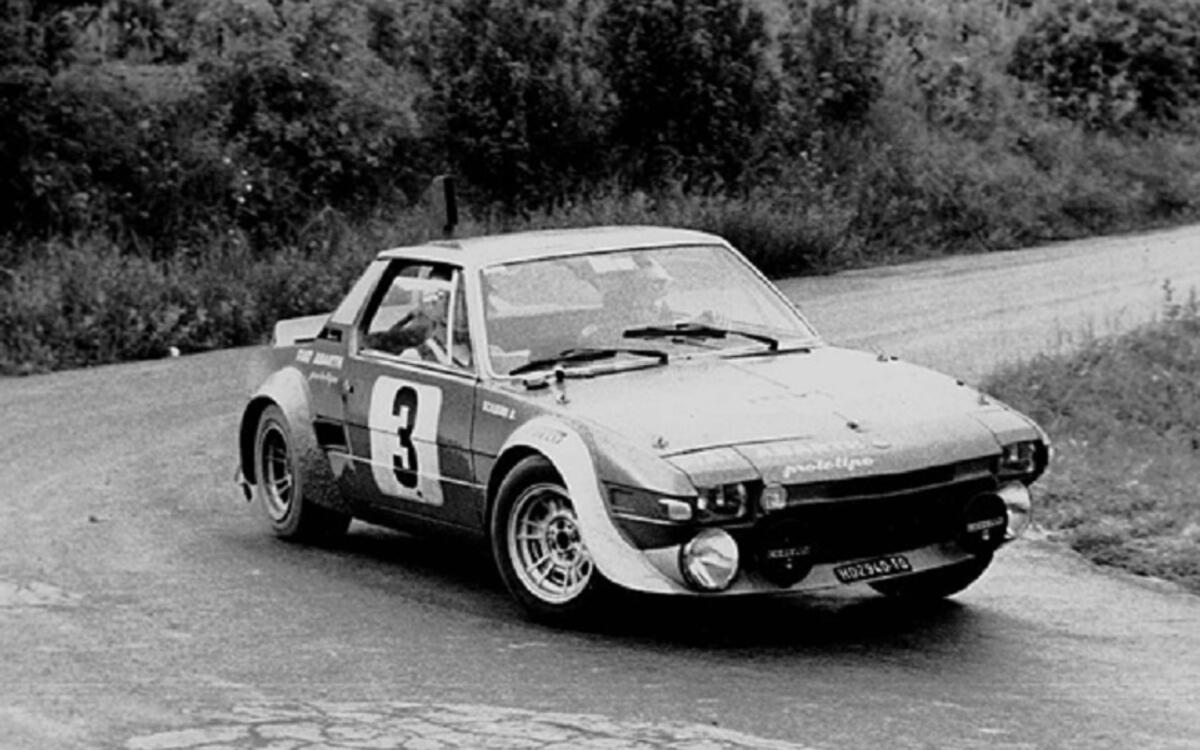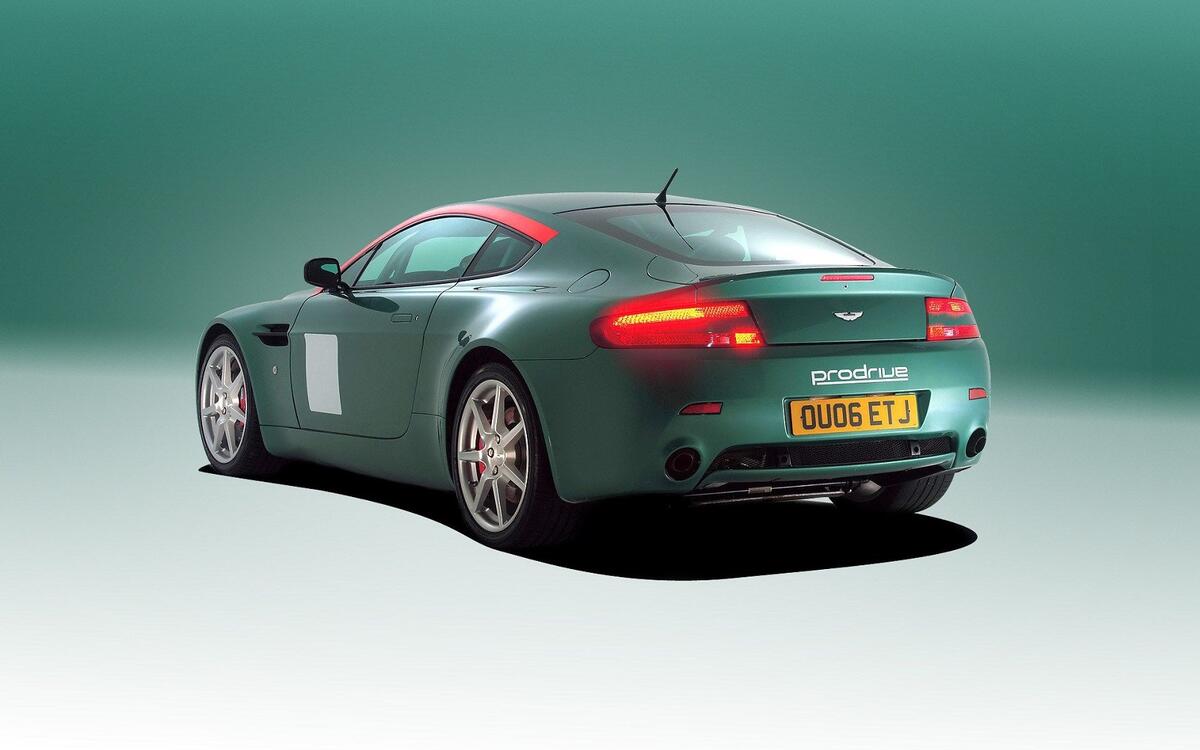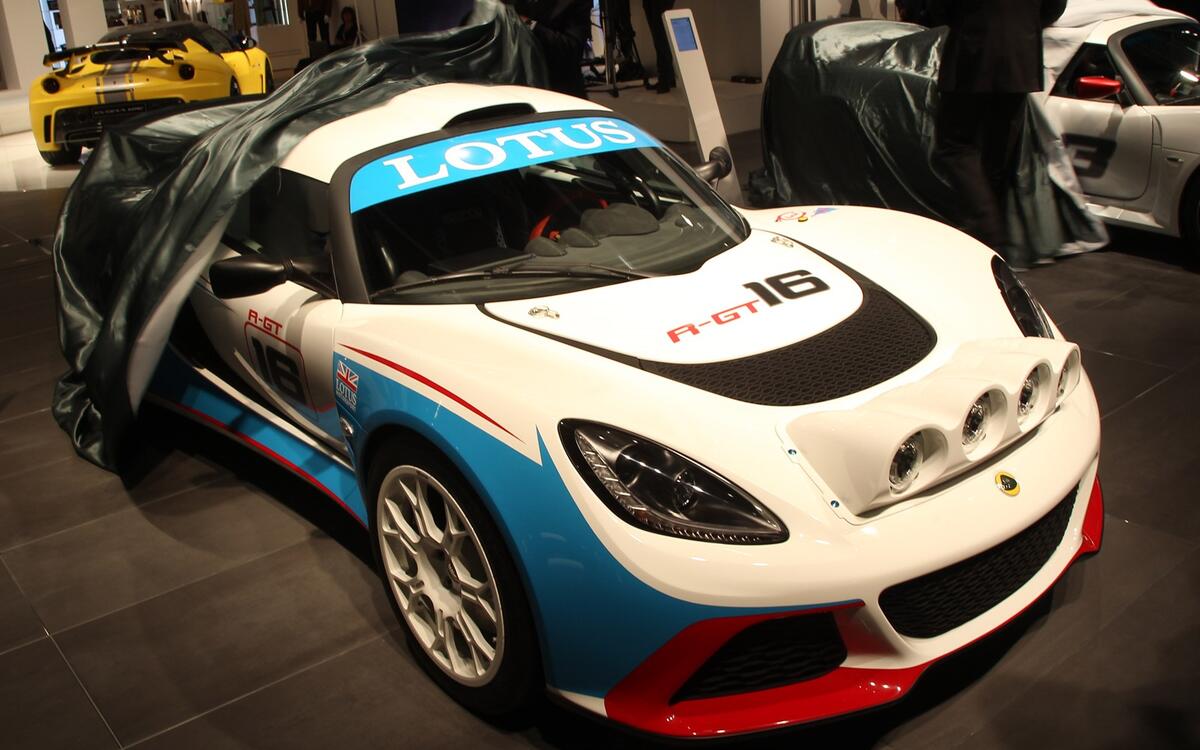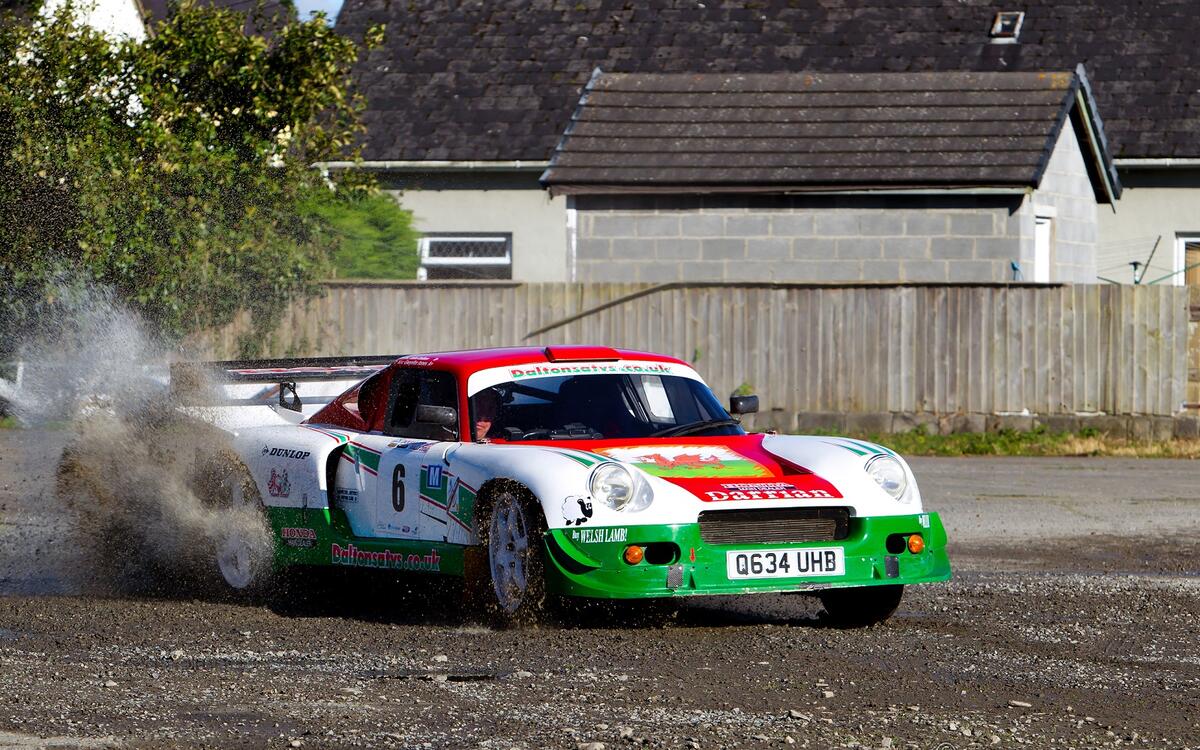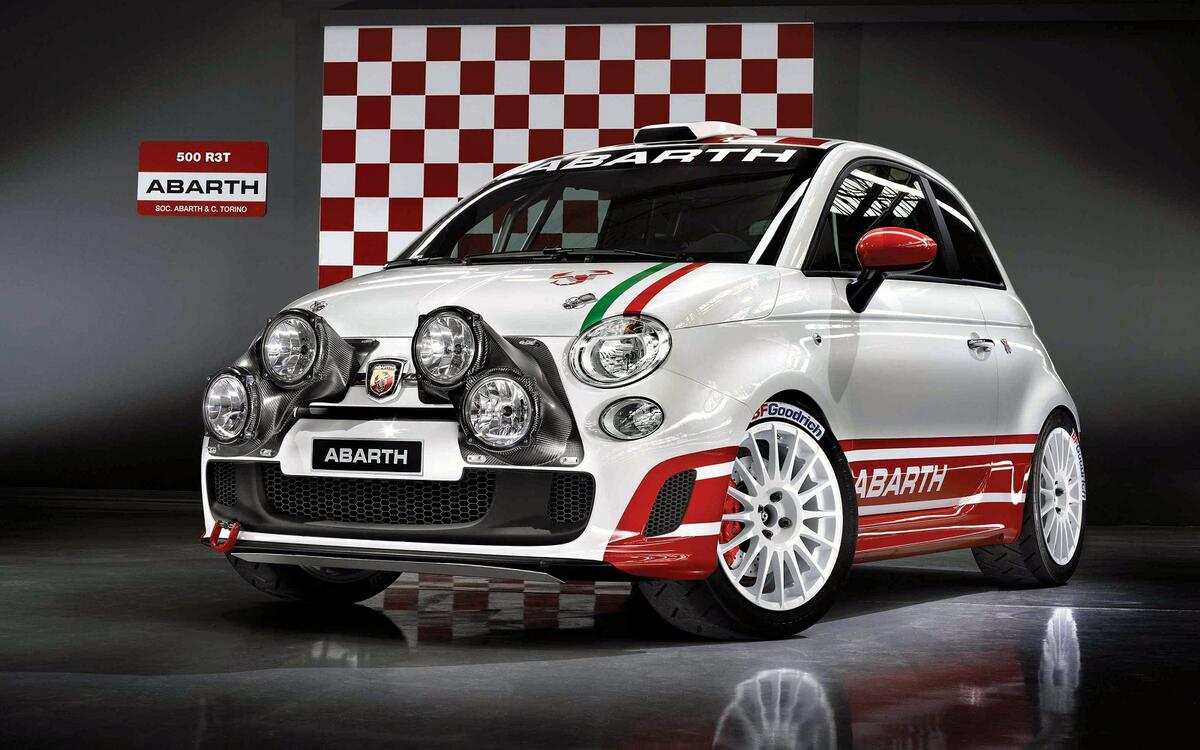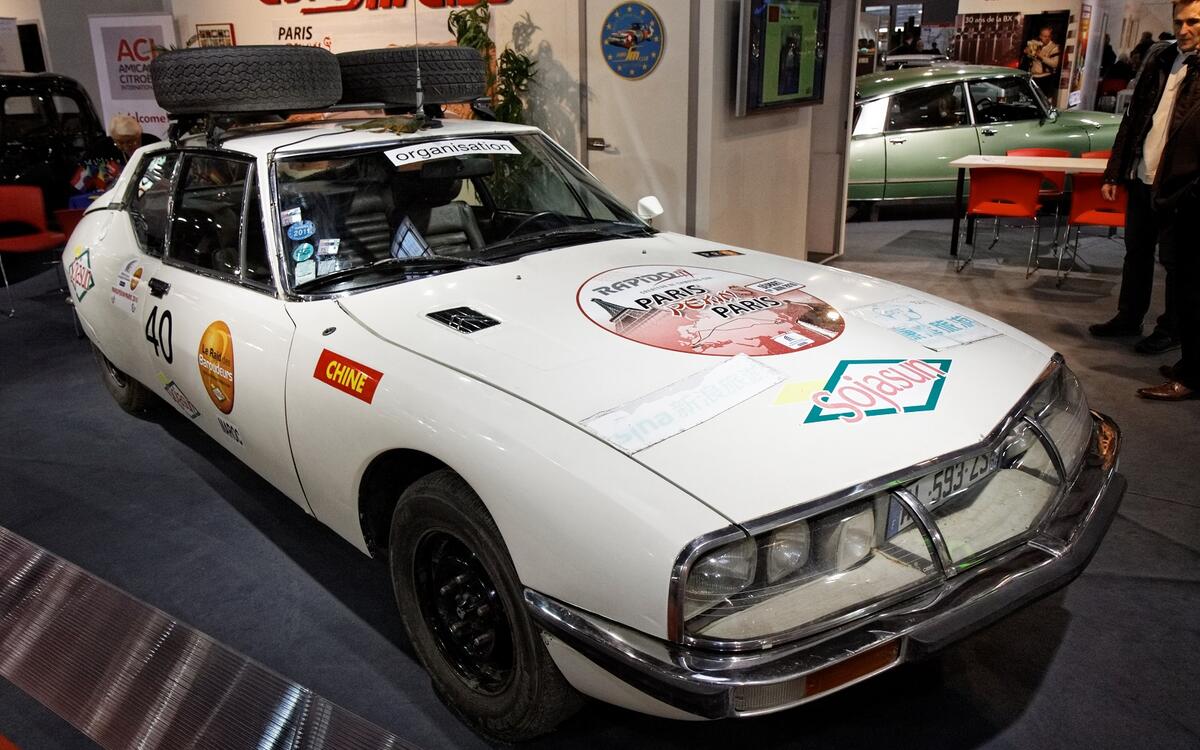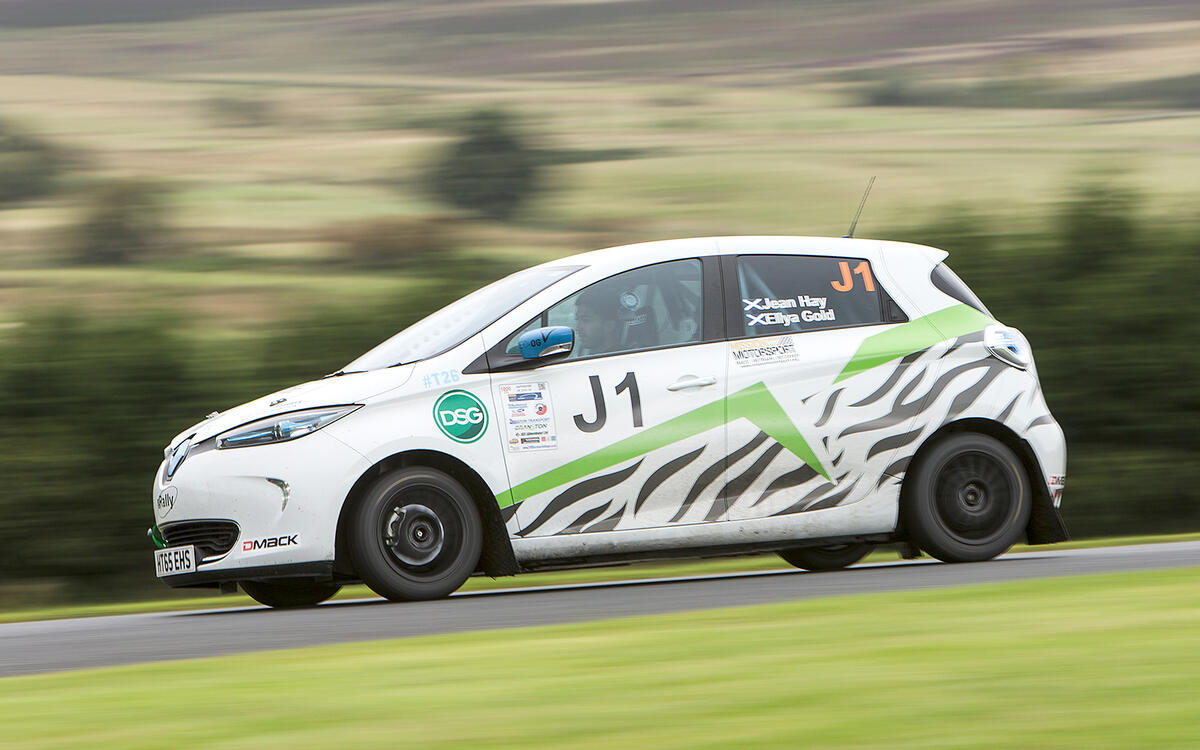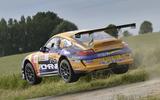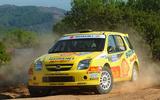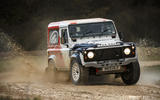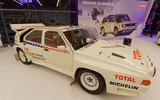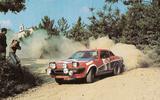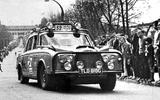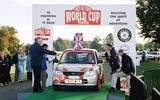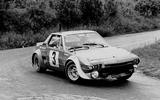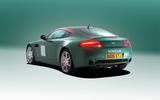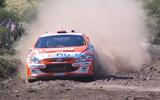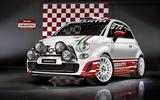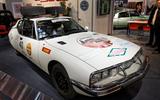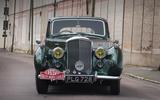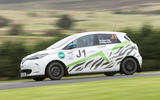 Slide of
Slide of
We may think we know what a rally car should look like.
Relatively small, but with a very powerful engine and four-wheel drive. Shame then that most of these cars don’t fit the bill – and made for delightfully unlikely rally cars nonetheless.
 Slide of
Slide of
Suzuki Ignis - 2002
Suzuki may have had a cutting edge image among motorcyclists in 2002, but it was better known for off-roaders with its cars. This is where the Ignis stepped in to help the company’s profile by going rallying in the Junior World Rally Championship with a Super 1600 specification car.
The five-door Ignis rally car proved successful on the stages and with the public, so much so that Suzuki launched the road-going Ignis Sport. The only problem here was the rally car was a five-door machine with 250bhp, while the road car was a three-door of awkward styling and a meagre 1.3-litre motor. Little wonder only 400 found homes in the UK. However, success in rallying came with the 2004 JWRC title for Per-Gunner Andersson.
 Slide of
Slide of
Land Rover Defender - 2014
The Land Rover Defender is famed for its off-road ability, but speed is rarely part of that. Bowler changed this when it created the Defender Challenge as a way to introduce more drivers to the rally raids and hill rallies.
A mixture of stage and hill rallies made up the first year’s competition in 2014, with seven events in total. Supported by Land Rover itself, the cars were based on Defender 90 Hard Tops with their 2.2-litre turbodiesel engines boosted to 170bhp and 332lb ft of torque. A roll cage, fire extinguisher, uprated suspension, underbody protection and lightweight 18-inch alloy wheels completed the £60,000 package.
The Defender Challenge came to an end in 2016 when production of the iconic Land Rover model stopped. However, many of the cars have gone on to continue their motorsport careers in hill rallying. They also make for entertaining road cars as they were all built to be road legal.
 Slide of
Slide of
Citroën BX 4TC - 1986
Citroën was not always a huge force in the World Rally Championship and the BX 4TC carries the blame for that. Developed with too little money and not enough engineering sophistication, the BX 4TC competed in the infamous Group B category but couldn’t hold a candle to the likes of Lancia, Ford or Peugeot. Still, at least Citroën built 200 roadgoing BX 4TCs for those brave enough to buy one.
A 2.1-litre engine delivered 380bhp, but the four-wheel drive of the 4TC was crude. It was also a larger car than many of the compact Group B weapons from other manufacturers, so the BX was not as nimble. It made its debut on the 1986 Monte Carlo rally but both entries retired on home turf. Sixth place in Sweden was some consolation, but misery on the Acropolis Rally saw Citroën pull the plug even before Group B was banned.
 Slide of
Slide of
Triumph TR7/8 - 1976
The TR wedge’s rally career was another example of British Leyland settling for defeat where victory should have been the result. Already delayed into production, the TR7 was underpowered, so Triumph fitted the 16-valve Dolomite Sprint engine to its rally car and tuned it to 220bhp. It handled well, but lagged behind the 265bhp Ford Escorts.
In 1978, rule changes made the TR7 rally car illegal as Triumph didn’t sell a 16-valve road-going version, so the TR7 V8 stepped in. Rover’s V8 powerplant gave it 300bhp, even if handling was slightly upset by the larger engine. Tony Pond used all of his considerable talent to wrangle results from the TR7 V8 and scored wins on the 1980 Manx and Ypres rallies, accompanied by that fantastic V8 bellow.
 Slide of
Slide of
Rolls-Royce Silver Shadow - 1970
The 1970 World Cup Rally was the longest ever motorsport event at that time, covering 16,000 miles through 25 countries in 16 days. The publicity potential was not lost on Rolls-Royce model owner Ray Richards, but Rolls only offered under-the-counter support. So, Richards relied on rally stalwarts Bill Bengry and David Skeffington to sort the car.
This pair ditched the Shadow’s air conditioning and air suspension for the sake of reliability. They whipped out the US-spec smog emissions equipment and also routed the exhausts out of the bonnet and over the roof to improve ground clearance.
The car went well, albeit with plenty of running repairs, until the rear suspension became fatally cracked in southern Brazil. With not enough time to fix it, the team was out of the rally but continued on the route to offer support to other teams still in the race. So, the Silver Shadow made it to Mexico even if it was not officially classed as a finisher.
 Slide of
Slide of
Daihatsu Cuore Avanzato - 1998
Compact dimensions, lightness and a revvy engine are all desirable qualities in a rally car, but the Daihatsu Cuore Avanzato took this to extremes. The Cuore was a Japanese Kei car, so was tiny to begin with and had a turbocharged 659cc four-cylinder engine making 64bhp. Then the idea of the Daihatsu Rally Challenge was thought of.
For this series, 20 Avanzatos were handed to preparation expert Harry Hockly. His team upped the rev limit to 10,000rpm and a new ECU to make the most the engine’s titchy capacity. With four-wheel drive as standard, the Cuores weren’t quick in a straight line but they handled forest stages very well.
The Daihatsu Rally Challenge lasted three years but the foot-and-mouth outbreak in 2001 halted a great deal of rallying and the challenge didn’t return.
 Slide of
Slide of
Fiat X1/9 - 1973
Developed by Abarth to replace its 124 rally car, the Fiat X1/9 Prototipo used an enlarged 131 Abarth engine upped in size to 1840cc. The motor was mounted transversely as in normal X1/9s, but the twin Weber carburettors were fed cool air by an air scoop that sprouted from the engine cover and above the roof line.
The Prototipo made it on to the rally stage in 1974 and quickly started to show considerable promise. Many who tried it quickly said it was quicker and easier to drive at rally-winning pace than the Lancia Stratos. Yet Fiat decided to go with the 131 for its rallying focus and the X1/9 was ditched with only five cars made.
 Slide of
Slide of
Porsche 911 GT3 - 2014
The Porsche 911 has been winning rallies since the 1960s, but in recent times it’s focus has been on track. That changed when UK specialist Tuthill Porsche decided the 997 GT3 Cup was the ideal basis for a rally machine. So, the 997 R-GT was born to compete in the Sport and GT class of the World Rally Championship.
The R-GT is completely reworked from the single-seat Cup racer with two seats and space for two spare wheels. The brakes, suspension and electrics are changed for rallying and the engine is detuned to 320bhp to meet the regulations. In this form, the 911 has become a huge favourite with rally fans, helped by Francois Delecour’s flamboyant driving to take the 2015 FIA R-GT Cup title.
 Slide of
Slide of
Aston Martin V8 Vantage - 2006
If you’re going to develop a rally car from an unlikely base, Prodrive are the people to ask for help and that’s just what happened here. The result was the V8 Vantage Rally GT by Prodrive, to give the car its full title.
Billed as ‘the most exclusive rally car in the world’ when it took to the Tarmac stages of the French Rally Championship in 2006, the V8 Vantage was completely reworked by Prodrive. The suspension, brakes and safety systems were all bespoke and there was also the choice of a specially developed dog-engagement six-speed gearbox.
Works Aston Martin Racing driver Stephane Sarrazin took to second overall in the Series GT class of the French championship and it’s thought four Rally GTs were built.
 Slide of
Slide of
Lotus Exige R-GT - 2011
Lotus has some history with rallying in the shape of the Talbot Sunbeam Lotus, but the Exige R-GT is all its own work. Developed for the Tarmac rounds of the World Rally Championship, it came with 299bhp 3.5-litre V6 engine and six-speed sequential X-trac gearbox.
Homologated to full FIA specification, which includes the safety systems, roll cage as well as the suspension, brakes and fuel tank, the Exige R-GT was created from scratch in just six months by the factory. It made its competition debut in Portugal in 2012 with Bernardo Sousa driving, though the car failed to finish due to an electrical problem.
 Slide of
Slide of
Davrian/Darrian - 1968
Outside of rallying circles, the names Davrian and Darrian are virtually unknown yet have a long history of giant-slaying performances. The Davrian started out as an Imp-based kit car built in Clapham, London in the 1960s and the combination of low weight and placing it over the driven axle made it a good choice for rallying.
The Davrian went through various incarnations, including track-focused versions, before the project was bought in 1983 by Northern Irish firm Corry Cars who made the Cultra. Tim Duffee then took on the firm in 1985 and moved production to Wales, where it remains. The design was honed, with help from the late Robin Herd of March Engineering, and the Davrian T90 GTR remains a force on Tarmac stages.
 Slide of
Slide of
Peugeot 307 CC - 2004
Often the face of Marcus Gronholm told the story of the Peugeot 307 WRC in its frustrated grimace. After the compact, flighty 206 WRC, the 307 CC convertible was not an obvious choice but the 307 hatch’s centre of gravity was deemed to high for rallying. So, the CC was built and caused the FIA a headache because of the way the windscreen is fitted to this drop-top because it effectively created a front strut brace.
With that regulatory hurdle overcome, the 307 CC WRC took to the stages in 2004 and Gronholm experience helped it win the Rally Finland. However, a second win was a long time coming on the same event the following year and the 307 only managed one more victory in Japan before Peugeot bowed out of this programme.
 Slide of
Slide of
Fiat 500 - 2009
Abarth is known for its rallying pedigree, but creating a pint pot rally car from the Fiat 500 was not something many had spotted. The 500 R3T was intended for a one-make series and came with a 178bhp 1.4-litre turbo engine and sequential six-speed gearbox. Sitting on 17-inch OZ alloy wheels and with Brembo disc brakes, as well as bespoke suspension and an all-up weight of 1080kg, all R3Ts were identical to keep competition close.
The one-make series was popular in 2010 and several R3Ts went on to compete in the Trofeo Abarth 500. Drivers reckoned it was a fun car to drive on tight, twisty Tarmac stages.
 Slide of
Slide of
Citroën SM - 1971
A Maserati-engined Citroën would not be many people’s first port of call when building a rally car, but the SM was the fastest car the French maker had at the time. The engine could be tuned to 200bhp, but was usually kept in standard state for reliability.
The big asset of the SM was its height adjustable suspension and supple ride that let it cruise over rough terrain with ease. This helped the car to win its maiden event on the 1971 Rallye du Maroc with Jean Deschaseaux at the wheel. Success was limited after that as tyre wear was a problem with this competition SM.
 Slide of
Slide of
Bentley R-type - 1952
Before rallying became solely about stage times, the Monte-Carlo event included competitions for the most comfortable and stylish cars, which is what encouraged Bentley to enter. After the Second World War, the MkVI enjoyed some success on this rally and the R-Type continued that in the hands of one of the original ‘Bentley Boys’, Mike Couper.
Couper had competed with Tim Birkin before the war, so the Monte held no fears for him, especially as the R-Type was set up for the event by the factory with modified cylinder head and snow tyres. They set out from the Glasgow start point and won the Concours de Confort and a Coupe d’Or at the finish in Monaco.
 Slide of
Slide of
Renault Zoe - 2016
Because of the high torque levels of electric motors, EV powertrains are very well suited to rallying, even before any modifications are made. One day – in theory – all rally cars will be electric-powered, but this trend needs to start somewhere. Scottish-based eRally took a Zoe and stripped around 100kg of weight out of it, taking it down to just over 1300kg.
The inherently low centre of gravity of EVs is also useful in rallying, and when we drove the car in 2016 we were surprised by its agility, and could see a future for the car in junior rallying.
Join us as we explore everything from Porsche 911s to Renault Zoes - here are the most unlikely rally cars ever
Advertisement


